Two Days Removed from the John Muir Trail
Late July 2021.
“Be honest. What are the chances that we actually finish this thing?” I ask into the dark. It’s around our bedtime — 8:30 or 9 — and we’re both huddled tightly into our sleeping bags. We’re on the banks of a lake whose name I’ve long forgotten, on the side of the Pacific Crest Trail in the Sierra Nevada mountains.
“If it stays how it is right now? I’d say 30 … maybe 40 percent,” my roommate tells me with a sigh. We both know it’s less than that. We’re low on food, low on morale, and low on the athletic tape that he’s been wrapping around his lower leg for the past two days to see if it would start to feel better. It hasn’t. We’re eight days into what we had anticipated to be a three-week-long excursion, and we seem to have reached our end.
………….
Okay … cold opening out of the way now (phew), time for some context. We were on the John Muir Trail, trekking along many of the same paths of the mighty Pacific Crest, though occasionally breaking off on our own. We had no real reason to be there — no personal mission, no need for clarity or escape. We just wanted to do it, so we did. Or at least tried. We started planning this trip in the fall of 2020, months before we had hoped to get onto the trail. We bought maps and borrowed books, sent articles back and forth, the whole lot. I could give you more details here, could tell you about the overpriced REI backpacking food we bought in droves, or the next to no training we did before hitting the trail. But that’s not really what this is about. We had gotten ourselves into a pickle out there in the mountains … little before that matters.
All good? Good. Back to the side of the lake and the sleeping bags.
………….
It’s the morning of day 9. I’m up before my roommate (as I have been for most of the trip), trying to pick through the bottom of his bear canister for enough coffee grounds to fill our two mugs. We had spilled our bag of instant coffee the night before, creating a new blend of coffee/trail mix/dirt that I was excited to try. Ended up being a little crunchy for my liking, but that’s okay. We had bigger things to worry about. He emerged from our tent as I was boiling the water, hobbling in silence around our campsite for a few minutes before I worked up the courage to ask him.
“How does it feel?” I gesture to his shin and the dirtied athletic tape, the untied shoe.
“Ummm not great.”
Cool. I can work with not great. Not great is better than terrible, or even bad. It means we can keep moving, at least for now. It means there’s a chance.
“Any better than yesterday?”
“Maybe a little. Not much.”
He could barely walk yesterday, so that isn’t a very good sign. Even with the medical advice of a group of bearded old men (one of whom even claimed to be a doctor) that we’d met the night before, he was still moving slowly, limping heavily.
I was told that the pain had started up a few days prior (day six maybe?), near Silver Pass Lake. My guess is that it wasn’t worth mentioning at the time, as with most minor aches. However, hiking up and down hills with a however-many-pound backpack isn’t the best thing for a minor ache, and soon it grew into a major one. Major enough that he started limping, started slowing down. Started questioning if it would make the 100-plus miles we had left to walk. I’ll tell you now, as I see no better time: it didn’t.
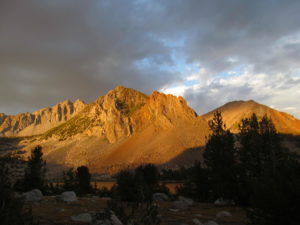
Still the morning of day 9, and our camp is mostly broken down. I’m sitting on my backpack, waiting on Sam — that’s his name, by the way: Sam — to finish stuffing his own pack before we get moving. It was five or so miles to our next resupply point, plenty of time to gauge the durability of his leg. Mostly downhill too, falling into the valley of Muir Trail Ranch (he told me downhill was what hurt the most). A few heavier clouds begin to form as we start our trek for the day, and I try to remember how deep in my backpack I’ve stowed my rain jacket, and if it’s worth the effort to fish it out. We walk in silence with me about twenty yards ahead of him, glancing occasionally over my shoulder to make sure I’m not moving too fast. The limp in his right (or left?) leg grew more and more pronounced as we moved, causing more frequent ibuprofen stops and solemn silences — we both knew this would be our last day on the trail.
………….
Before we had left for the trip, my father had given me a satellite GPS communication thing that we were told to use only in emergencies. “It has three preset messages,” he had relayed to me on the front patio of my childhood home a week or so before the trip, “one is ‘all good,’ one is ‘not all good but not totally fucked’ and one is ‘totally fucked, call a helicopter.’” One could quickly see the holes in this system, as the second option could mean anything from some dirt in our coffee to a minor bear attack. Regardless, it was around this point of our trip — hiking downhill at a crawl, a few miles out from our resupply point — that I sent the message to my loving and worrying parents that we were ‘not good but not totally fucked.’ It felt like the right thing to do (if only it had a ‘not great’ message in its presets).
………….
Four or five hours after we broke camp, we ran into the same group of bearded old men that had given Sam advice the night before. The one who had claimed to be a doctor (or maybe he just worked in a hospital) had been giving our situation some serious thought and was happy to have run into us to deliver his verdict.
“There’s a hot spring a mile or two from Muir Trail Ranch,” he told us in an upbeat tone, “go sit in there for a couple of hours, take the day off, and see how it feels in the morning. Take two days if you have to.”
“…thanks, we’ll give that a shot,” we force an appreciative smile, and the old men beam in return. We were never going to go to a hot spring. As relaxing as it sounded, a couple of hours in a bath would not make us ready to tackle the hundred miles we had left to Mount Whitney, the end of the trail. We thanked them for their help, and they shuffled off down the trail, hiking poles clicking with each step.
We never saw the old men again, never even caught their names. Oh well. 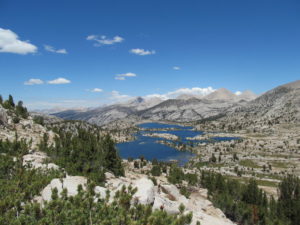
It was around one in the afternoon when we reached the resupply point, a little shack full of five-gallon buckets of mailed food and a small general store. It was crowded with smiling hikers, some stopping here for lunch, others just packing up their food and continuing on. We set down our packs, me taking a seat on top of mine while Sam went to see about our two buckets of food that we had sent here a month or so ago. It was time to strategize.
Muir Trail Ranch is not a place designed for injured hikers. It was serviced (very occasionally) by one dirt track wide enough for a single jeep, maybe a small pickup truck. Primarily, it was a place best traveled by horseback, as evident by the lingering smell of horse manure and the occasional passing horse. Nevertheless, it was the end of the line for us, and we had to get off the trail somehow.
Page 9 of the National Geographic John Muir Trail Topographic Map Guide is where you’ll find Muir Trail Ranch, and the predicament we’d gotten ourselves into. Sitting on my bag and studying the page, I begin to form a plan. About five miles to our west was Florence Lake, supposedly the site of a ferry that could take us across to a paved road. Maybe there’d be a bus route there? Or at least some cell service, or some tourists who’d be willing to give two dirtied and dampened hikers a ride into town. It was our best bet.
I join Sam at the resupply shack as he talks to the woman behind the counter. He’d already explained our situation and was arranging for our buckets to be mailed back to our house.
“Is the ferry running right now?” I ask her.
“I think so. There should be a phone at the dock, you can call the ferry from there and see if they’ll come get you guys. It usually closes around five, but there’s a trail that wraps around the side of the lake if you miss it.”
Not the most reassuring of answers, but it’ll have to do. It was already nearing three, and we still had to hike the five miles to the lake. We thank her and strap back on our backpacks, walking off in the direction she told us to. In my urgency and stress, I continually hike out of view of my injured friend, convinced that we were going to miss the ferry. A real tortoise and the hair complex, as my stopping and waiting and waiting and stopping only serves to exaggerate our problem.
………….
Through all of this, I couldn’t help but feel a bit excited in the back of my mind. We were now far removed from the monotony of a backpacking trip, and something like a real adventure was unfolding in front of us. An adventure in the sense of not knowing where we’d be sleeping that night, or if we’d make it to the ferry on time. In the sense of abandoning a beaten path for one less traveled, for better or for worse. Ha! I knew I’d find a moral in this story somewhere.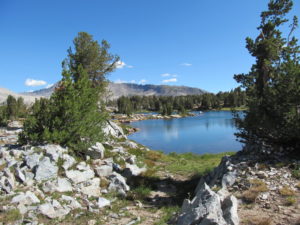
It was four-thirty-ish when we reached a weathered box with a phone attached to it about thirty yards above the shore of Florence Lake. Sam dialed the number taped above it and got the person on the other side of the ferry, who told us it would be there in 30 minutes. We had a seat and busted out a few bags of tuna, watching the clouds from the morning grow larger and larger. Soon we were approached by a lone hiker, a tall man with a bald head and a look of resignation.
“Is this the phone for the ferry?”
“Yeah, call them and tell them you’re waiting here too.” He does, and now there are three of us waiting for the ferry. Turns out he was a backpacker as well, deciding to leave the trail because he was tired of it. We explain our situation to him, getting a “damn, that sucks” in reply. However, not all is lost. This man, whose name I’ve forgotten, was getting a ride to his home in Fresno from his father-in-law and says we can join them. So here we are, waiting for the ferry, promised cell service at some point in the next day or two and guaranteed a ride to a city on the wrong side of the Sierra Nevada. Adventure, right?
There was lightning striking the surrounding mountains by the time the ferry arrived, and the driver was frantic. She shouted at us to hurry, and we threw our bags in the boat and hopped in with our new friend, and a few tourists who were camping on the other side of the lake. She gunned it as the rain started to fall, crossing the lake in just a couple of minutes. We all quickly unloaded and found shelter in the little store that the ferry driver ran with her husband. Tired and wet, Sam and I sat by the souvenirs, him talking with our new friend and me trying to type out a message to my father on the satellite phone, telling him what I meant by ‘not totally fucked.’
………….
Some twenty-four hours later, and we’re sat at an overheated bus stop in Fresno, waiting for our ride. We’d spent the morning chatting with the man from the ferry and his father as we rode out of the mountains. They shared stories of their past with us, pointing out different lakes and lodges as we drove past them and reminiscing. After an hour or two in the car, we arrived at the man’s house. We dropped off his in-law and headed into town, to the overheated bus stop. We thank the man as he leaves us somewhere in the area of our bus stop and watch him drive away, back to his home and his family. We were still hundreds of miles from my car, which itself was a ten-hour drive from my house. But we had a plan.
From Fresno, we rode aboard a tourist-filled, Yosemite-bound tour bus, still a week and a half removed from our last shower. Sam slept most of the way as I stared out the window reflecting on the past 48 hours with a mix of emotions. The mood on the bus was one of excitement (most of them were starting their adventure, not ending it), and the chatter from the other passengers kept me awake as we ascended back into the Sierras. By mid-afternoon we were back at the starting point of our hike: Yosemite. A storm had blown in, so we sat under the cover of this new bus stop — we weren’t interested in taking in the views anymore — with a promise that a bus to Mammoth Lakes would show up eventually. An hour or two later, it did: another tour bus, filled with a cohort of older free spirits who took little notice of the two weathered and dirtied former backpackers that joined their ranks. We sat at the front of the bus, talking to the driver. His name I’ve long since forgotten, but it was he who kept our morale up as we completed this, the second leg of our bus tour of shame out of the mountains. Tour bus driving was his passion: he loved meeting the people, seeing the sights. He’d been assigned the Yosemite route recently, and it was his favorite so far. As it grew dark, he told us the story of his life; how his wife had passed, his children had grown and moved away. He beamed with pride as he told us about his boys and their accomplishments — he loved them more than anything. Soon the free spirits had disembarked, and it was just us and the driver. We kept the conversation up all the way to our stop in Mammoth Lakes, thanking the man deeply for his company as we let him on his way.
………….
After a shower and a dinner in a Western-themed bar on the cheap side of town, we settled into our Motel 6 beds for the night and slept soundly and fully. Early the next morning we caught our final bus route, this one bound for the small town of Lone Pine, where my car sat waiting. It was 10 or 11am on day 11 when our 21-day backpacking trip came to an end.
We were back where we had started, staring up at the far away summit of Mt. Whitney with a false sense of completion in our minds. Through every dull moment on the trail, I had dreamt of this moment, of seeing my car after a job well done on the JMT. I had dreamed of trying to pick out my car from Whitney’s peak, of staring back at the two hundred-plus miles we had conquered. This … wasn’t that. This was a somber, if a bit unsettling, return to our starting point. But we were done. Two full days after having left the trail, we were done. Driving away with the massive eastern wall of the Sierras in my mirror, I couldn’t help but smile. 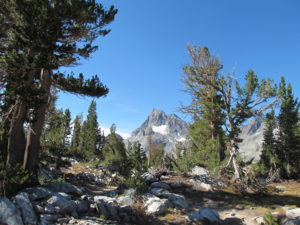
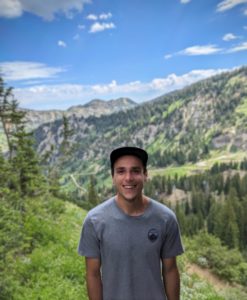


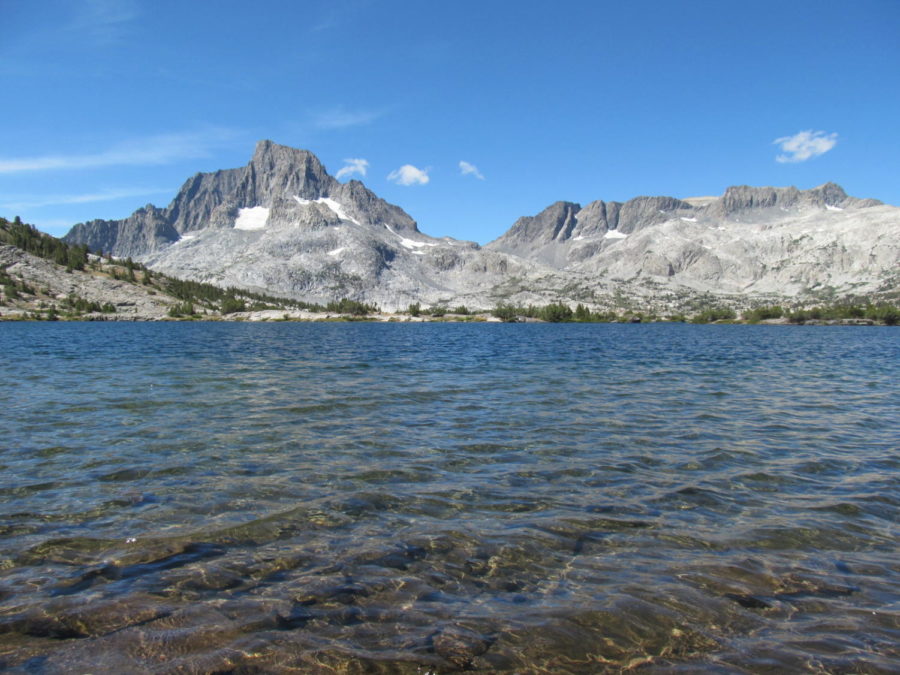
Paul Wagner
Aug 30, 2023 at 4:02 pm
I really enjoyed you’re story of the John Muir trail trip. My brother and I are doing the southern route from Flourance Lake to Whitney Portal . We are in our late 60s and it will be a real test. Glad you got to see some of the mountains in California.
I noticed that you are from the beautiful state of Utah. I hope to explore Utah in the future, such friendly people.
Keep up the great writing and good luck in school!
Paul Wagner